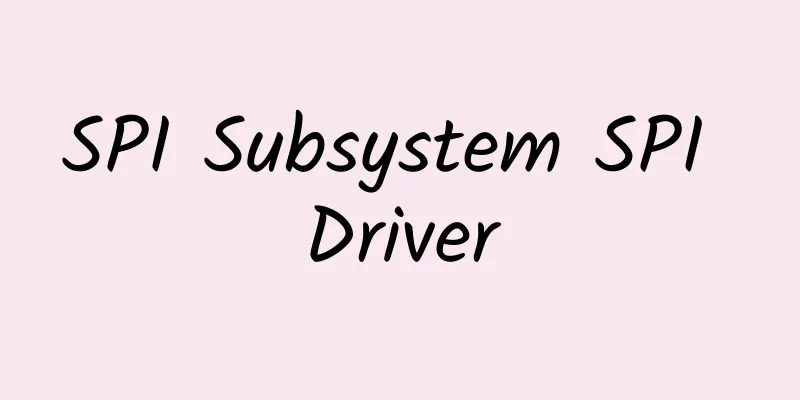[Technology Feast] Ruijie Cloud Desktop EST Protocol RUTP Transmission Technology
![[Technology Feast] Ruijie Cloud Desktop EST Protocol RUTP Transmission Technology](/upload/images/67eb9b7e0d7fd.webp)
Prefacesummary Ruijie Cloud Desktop EST protocol was originally only applicable to LAN. In order to meet the needs of remote office, that is, office across WAN, it is necessary to support UDP transmission protocol (the original version only supports TCP protocol) which is more in line with the real-time transmission requirements of weak network. Combined with the analysis of cloud desktop scenarios, we proposed a new transmission protocol called RUTP, which is a reliable user layer transmission protocol based on UDP. This protocol can solve the problem of usage lag caused by network packet loss to a certain extent. Keywords UDP, RUTP, userspace, EST, TCP. List of terms
1. OverviewWith the development of the network, the WAN bandwidth is getting larger and larger, and it is possible to use cloud desktops in WAN. However, compared with LAN, WAN has higher latency and higher packet loss, resulting in poor cloud desktop experience. In order to improve the poor experience of cloud desktop in WAN, we need to optimize the reliable transmission protocol characteristics in the cloud desktop protocol so that it can adapt to the high latency and high packet loss WAN remote real-time transmission requirements as much as possible. Traditional reliable transmission protocols generally use TCP, which is implemented at the kernel layer. If you want to optimize it, you need to optimize the TCP kernel module according to different operating systems. Optimizing the TCP kernel module is technically difficult and prone to problems, or problems may directly cause the entire system to crash, but it is theoretically feasible. Then, let's consider the deployment situation. The transmission submodule of the cloud desktop protocol includes the transmission client submodule and the transmission server submodule. The former is generally deployed on different terminal devices as upper-layer application software, and the latter is generally deployed on the server. Assuming that even if the server operating system of the latter is controllable and modifiable, the former is basically not allowed to be modified for different terminal device operating systems, or a large part of it is closed source. In summary, it is not feasible to optimize based on the existing TCP technology. In terms of real-time data transmission, UDP not only has more advantages than TCP in terms of transmission characteristics, but can also be modified to meet the requirements of cloud desktop protocol deployment - transmission optimization at the application layer to achieve the purpose of convenient deployment. Taking all the above factors into consideration, we proposed a reliable application layer transmission protocol based on UDP that is suitable for cloud desktops, called the RUTP protocol. 2. Technical Introduction2.1 Important Concepts of WAN Real-time TransmissionHere we introduce several concepts for achieving real-time transmission of desktop protocols over a wide area network. 2.1.1 WAN Network Characteristics Wide Area Network (WAN), also known as extranet or public network, is a remote network that connects computers in local area networks or metropolitan area networks in different regions. It usually spans a large physical range, ranging from a few kilometers to tens of kilometers or even thousands of kilometers. It can connect multiple regions, cities and countries, or span several continents and provide long-distance communications to form an international remote network. WAN has the following characteristics:
2.1.2 Reliable Transmission Reliable transmission is the use of a series of technologies to ensure the accurate and precise transmission of information between the sender and the receiver. In order to ensure the reliability of message transmission, TCP gives each packet a sequence number, and the sequence number also ensures that the packets transmitted to the receiving entity are received in order. The receiving entity then sends back a corresponding confirmation (ACK) for the bytes that have been successfully received. If the sending entity does not receive the confirmation within a reasonable round-trip time (RTT), the corresponding data (assuming it is lost) will be retransmitted. 2.1.3 UDP protocol characteristics UDP is the abbreviation of User Datagram Protocol, which provides simple, transaction-oriented, unreliable information transmission services. IETF RFC 768 is the official specification of UDP. UDP messages do not have reliability guarantees, order guarantees, and flow control fields, and have poor reliability. UDP has the following characteristics:
These characteristics of UDP make it possible for us to control and transform it at the application layer to make it more suitable for remote desktop transmission scenarios. Most application vendors who want to adapt to real-time transmission scenarios over wide area networks basically make modifications based on UDP. 2.1.4 Congestion Control Algorithm Congestion refers to the phenomenon that too many packets arrive at a certain part of the communication subnet, making it impossible for the network to process them in time, resulting in a decrease in the performance of this part or even the entire network. In severe cases, it may even cause the network communication service to come to a standstill, i.e., deadlock. Congestion control algorithms use good strategies (or methods) to reduce or avoid the occurrence of congestion, such as CUBIC and BBR congestion algorithms. 2.1.5 Secure transmission In order to protect the security of sensitive data during transmission, the sender encrypts the sensitive data and transmits it after encryption. The receiver needs to decrypt the data before receiving it. Currently, the SSL (Security Socket Layer) encryption mechanism is mainly used to ensure data security. This is basically a practice in the industry. 2.2 Introduction to EST-RUTPRUTP (Reliable User Transportation Protocol) is based on the UDP underlying network transmission protocol, implements data retransmission similar to TCP protocol, realizes reliable transmission, combines desktop service characteristics, introduces more advanced congestion control algorithms, and realizes efficient transmission. The specific implementation is shown in the following figure: The RUTP transmission protocol has improved the congestion control algorithm, making data retransmission faster, with less delay, and improving transmission efficiency. The algorithm is no longer based on packet loss judgment and no longer uses a linear multiplication and reduction strategy to maintain the congestion window. Instead, it samples and estimates the maximum bandwidth and minimum delay respectively, and uses the product of the two as the sending window, and introduces some mechanisms to limit the data sending rate to reduce the impact. Simply put, the network link can be likened to a water pipe. If we want to use the network to transmit data as much as possible, the method is to fill the water pipe with water. The volume of the water pipe = the thickness of the water pipe × the length of the water pipe. The previous congestion algorithm is to keep filling the water pipe with water. When the water pipe bursts, the water filling volume immediately drops to half of the original amount. The RUTP congestion algorithm periodically detects the capacity of the water pipe and sends data steadily according to the capacity of the water pipe to try not to cause the water pipe to burst. At the same time, the RUTP protocol also supports SSL encrypted transmission, which can be automatically configured by the management level to enable or disable. 3. Ruijie RUTP technical features3.1 RUTP Technical FeaturesThe RUTP protocol has the following technical features:
4. Restricted Information4.1 RUTP protocol restriction informationThe RUTP protocol currently only supports the scenario of "packet loss rate <= 1%, delay <= 50ms, jitter <= 10ms". When the user network has a "packet loss rate of 1%, a delay of about 50ms, and a jitter of 10ms", the desktop is basically available, but the fluency is worse than when the packet loss rate is 0.5% and the delay is 30ms". Therefore, it is necessary to clarify the specific services used by the customer and evaluate the desktop requirements. 5. ConclusionRuijie Cloud Desktop EST protocol RUTP transmission technology optimization enables cloud desktops to adapt to more scenarios and ensure desktop display quality and display smoothness. |
<<: 6 IT roles that need retraining
Recommend
What kind of sparks will be created when 5G meets the power grid?
In the past, electricity changed the way of produ...
GDPR brings opportunities to improve overall security and optimize business processes
Privacy has been a major concern for businesses l...
Should I turn off Wi-Fi when I go to bed at night? I finally figured it out
When the word "radiation" is mentioned,...
Java Server Model - TCP Connection/Flow Optimization
Usually, our applications do not need to handle t...
F5 is committed to being a "general practitioner" protecting hospital applications by taking a two-pronged approach of safety and reliability
At a time when all walks of life are experiencing...
Yecao Cloud: Hong Kong dedicated server from 299 yuan/month, Hong Kong VPS annual payment from 138 yuan
Yecao Cloud is a Chinese hosting company founded ...
In the era of instant messaging, what else can 5G bring us besides speed?
The 5G era is approaching, bringing more poetic i...
Ruijie Networks: Not only a light chaser, but also a light maker for Ethernet all-optical networks
With the rapid development of information technol...
A “cat” walking alone on a narrow road: Cat.1 and narrowband communications (I)
Labs Guide When we talk about narrowband communic...
Operators begin trial operation of number portability: multiple restrictions, netizens are disappointed
We are not unfamiliar with number portability. As...
Canada to launch 3500MHz 5G spectrum auction
According to foreign media reports, Canada will l...
[5.1]spinservers: $89/month-Dual E5-2650Lv3, 64G memory, 1.6TB SSD, 10Gbps bandwidth, Silicon Valley data center
spinservers launched a one-week Labor Day promoti...
[11.11] CUBECLOUD 15% off all items, Los Angeles special monthly payment starting from 20 yuan, annual payment buy one get one free
CUBECLOUD is a Chinese hosting company founded in...
5 Service Level Agreement Best Practices for a Unified Communications Strategy
Organizations need strong SLAs to meet their UCaa...









